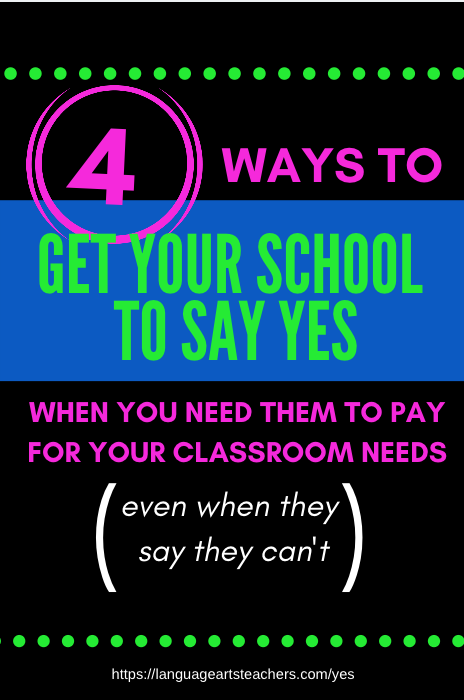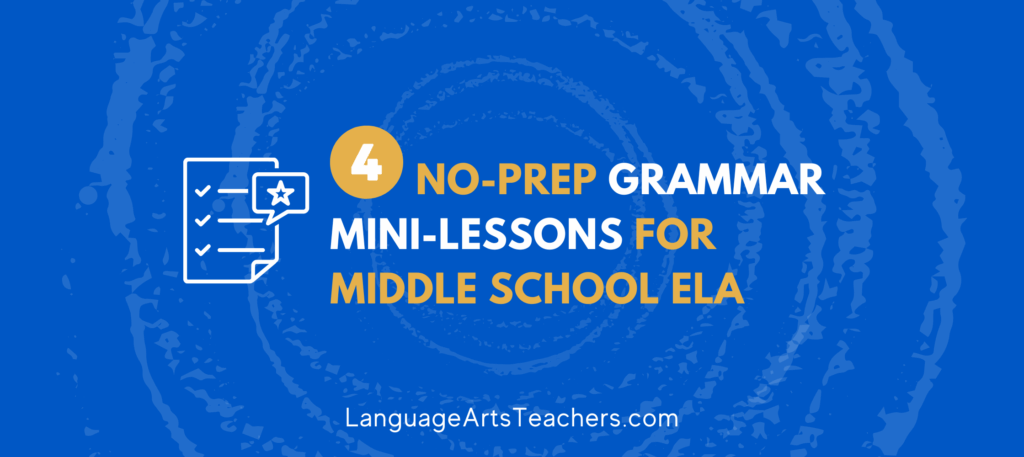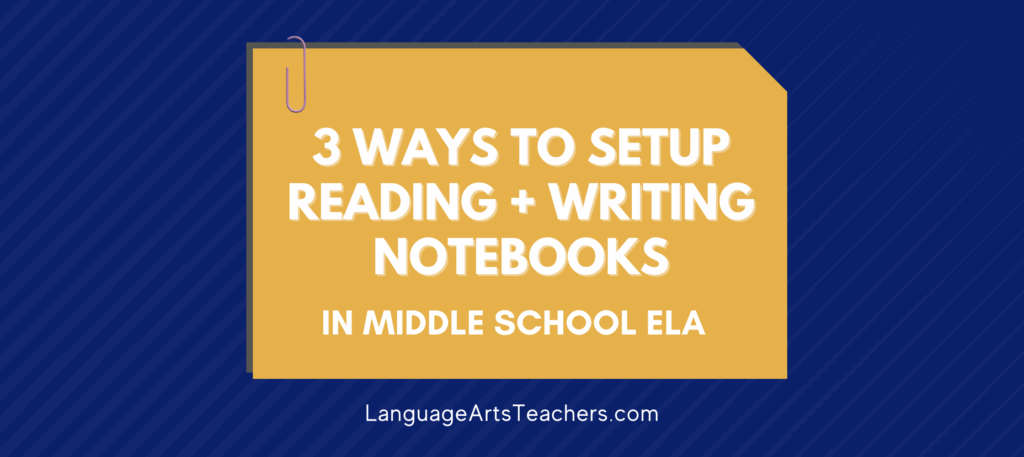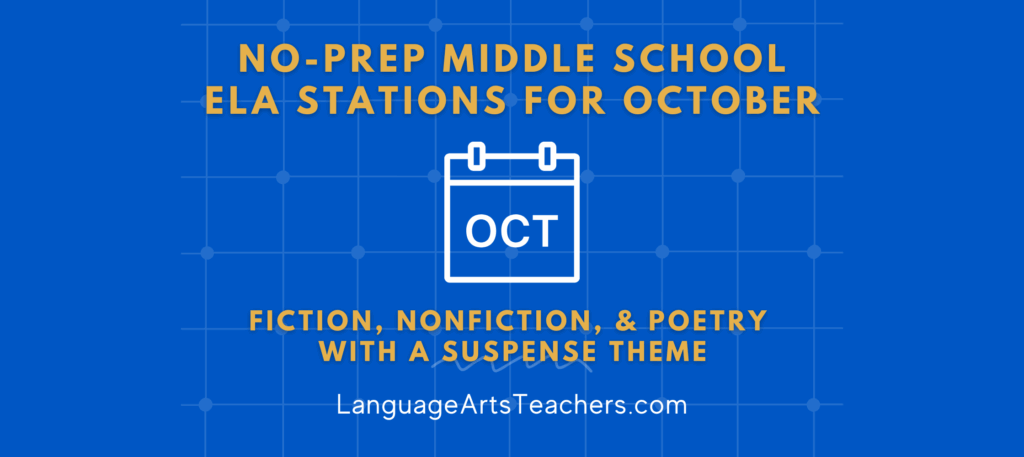When you need (or want!) classroom supplies, or you found your own curriculum resources you’d like to use, or maybe you want to upgrade a current magazine subscription or membership program for your teaching needs, your school should pay for it.
We’re spending more and more money “per student” through business and property taxes, and yet why are teachers STILL struggling to get the materials they need to do their jobs?
And yes, I’ve personally worked in schools where sometimes it’s as easy as turning in a PO form to the school secretary for something I needed and that was that. Done.
I’ve also personally worked in schools where I had to bring in my own sticky notes and paper clips. No joke. So I’ve seen both ends of the spectrum.
I work with teachers in my lesson plan membership program who came to me because they either had zero in the way of a curriculum, or because their curriculum was dull, outdated, or not at all user-friendly. . . or because they had so much curriculum already with far too many resources and way too much involved in prepping, that they just wanted one thing, in one place, with a consistent routine to the layout that makes teaching easy for them, and engaging for their students.
Easy to teach with AND engaging for students?
That’s also built to meet the standards AND that has built-in differentiation?
Is that too much to ask?
In other words, I’ve worked with hundreds of teachers in my own lesson plan membership program and many of them first join using their own personal funds, but many are able to then get their schools to pay for it.
I’ve asked HOW?
I’ve asked, “What did it take to get your school to pay for this FOR you?”
Because that’s how it SHOULD be.
So many teachers come to me because THEY chose to implement my lesson plan curriculum since it was designed to make teachers’ lives easier.
Literally. I designed it to be engaging for students WITHOUT teachers having to set up, prep, and create after school and on the weekends. There’s already too much to do, and it should be the norm, not the exception, that teachers can focus on their own kids and their own families after school hours. My teacher-friendly, pro-teacher lesson plans address that and make it 100% possible for teachers to never have to plan a lesson again if they don’t want to.
Too many textbooks and other district-chosen curriculum simply don’t take into account the TIME that teachers will have to spend to modify it so it’s actually interesting for the students, or how much personal time it’ll take to build out the other needs that those textbooks don’t address.
I’ve been able to talk with so many teachers who were told “We don’t have funds” or “There’s nothing in the budget” for their needs, whether that was for joining my own lesson plan membership, or simply buying more Expo markers.
And I’ve been successful (and SEEN success) from teachers who came back to me and said, “My school said YES!!! I need a purchase order form! I’m joining your membership!”
Here are the four BEST ways to get your school to say YES when you need something for your classroom:
#1 Consider WHO you’re talking to. Is it the decision-maker who controls the purse strings?
I’ve talked to teachers who said, “My principal said no” when asked to pay for their Middle School ELA Teachers Lesson Plan Membership, only to realize later on that the district curriculum specialist is actually the one they should have asked. Or in another example, the teacher asked her department head for funds to buy the membership, but she discovered later on that she could actually use Title 1 funds to pay for it.
So that’s the first step–when one person tells you “no” when you request funds to cover something you need, you have to really consider whether or not that’s the only person who can make that decision for funds. Sometimes, in more cases than you’d think, there are other people with other funds who can pay for your classroom needs. You just have to know who to ask, and who else has access to funding that will work for you.
#2 Use student work samples as proof that the materials you’re asking for are ALREADY working and are ALREADY getting the right results.
Sometimes, when people are bombarded with requests, it’s all just too much to handle and it becomes easier to say “no” to yet another request than it is to pay attention.
We know what it’s like when our students (or even our own kids!) bombard us with questions, and neediness, and #allthethings and it’s like, “I’m just going to say no to everything because I’m one person and I just can’t even handle all this right now.”
But when you can approach your principal (or whoever the actual decision maker is for funding) and SHOW a result you’re already getting and all you need now is their help so you can CONTINUE getting that result, it’s easy to say yes to, and it’s easier for that decision maker to see your request above and beyond those of others.
For instance, one of the teachers who joined my membership recently told me she was able to get her school to pay for it once they saw the rigor and quality of the work. She had used a couple weeks of the free resources I offer and when she showed her principal what a few of her “non-readers” and “unmotivated learners” had done with a brain dump activity, it changed things. Her principal saw the original lesson plan, saw the student-centered learning activity, and saw the result in the student work. Of course students have good days and bad days and it’s not that one lesson solved the problem of the unmotivated student, but the fact is that this teacher made her request real, concrete, and visual so her principal could say “yes” to her request.
#3 Make the request when you also have a SOLUTION or a counter-argument ready to go when you “know” the answer is “no.”
Ok, you’re 99.9% certain that your principal (or whoever has the power to say “yes” and cut a check for you) is going to say no to your request.
That’s fine. But this is exactly what we teach our students during our argument / persuasive units, right?
What is the main objection that the other side will have? What is the main concern? How can we go ahead and address it so it’s no longer a factor?
“I know my principal will say no to my request for funds to pay for this, but if I show him a way to do it that he probably hasn’t thought of . . .”
That’s the kind of thinking that will get you to a YES more often than not.
One teacher who joined my Middle School ELA Lesson Plan Membership told me she simply asked her principal if she could use the funds from a vocabulary program for the membership. Her principal told her she didn’t even realize they were paying for the vocabulary program, which was more expensive than the membership this teacher was wanting access to. The principal had taken over for another principal who left mid-year, and when this teacher (one of my new members!) simply showed that they could stop paying for the vocabulary program no one was using, it would more than cover the cost of the membership — with funds left over.
That’s just one example, but you can see how, with a little homework and digging, she made it an easy, logical decision for the principal.
#4 The word “no” doesn’t mean no forever. . . It’s all about the follow-up, and here’s how you can do that without being annoying!
Let’s say the decision maker says “no” to your request, even after you’ve presented proof, made it an easy “yes” by providing a logical solution, etc.
“No” doesn’t mean “no forever” and it doesn’t mean you have to resort to begging and whining like a middle schooler!
It’s acceptable to simply show an appreciation for their time and then to say something like, “Is it OK if I follow up with you about this after summer when we have the new budget?” Or “I understand, so would you be open to me following up with you at the end of the year when our other obligations have been paid for to see if there’s anything left in the budget?” Use it or lose it, right?
This is a mature, professional way to acknowledge the “no” answer, but it leaves things open to other possibilities down the road. The person saying no to you isn’t trying to ruin your life or make things difficult; there may be reasons far beyond their control as to why the answer is no. Psychologically speaking, we as human beings do have trouble saying no. If anything, we say yes far too often as we try to serve others and as we try to help in ways that exceed our capacity to help.
Therefore, simply asking if you can follow up later about the request is a good “out” for both of you. It means you are hearing the answer and you are respecting the authority behind it, but you’re also covering your own base by proactively letting it be known that you do have a request you’re serious about.
Ok, so how does all that sound?
You have four strategies—four plans of action—that you can take when you want or need something for your classroom that you need your school to pay for.
You’re in charge here!
Advocate for yourself and your students by making it possible (and easier) for those in charge of the budget to say, “Yes, of course!” to your needs.
Put it into practice by joining the Middle School ELA Teachers Lesson Plan Community and start going home earlier each day along with ownership of your weekends again!





